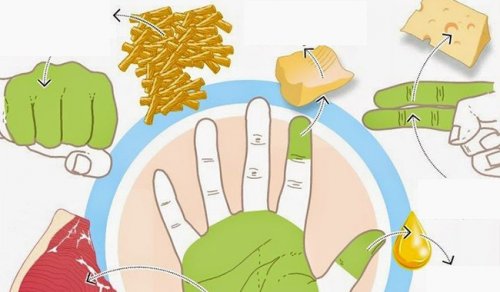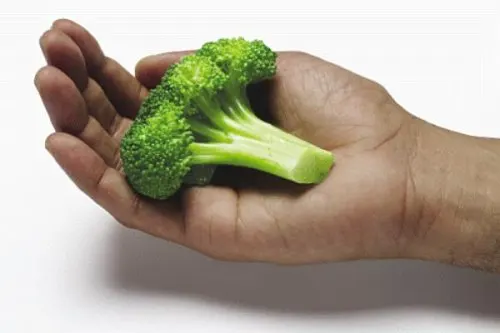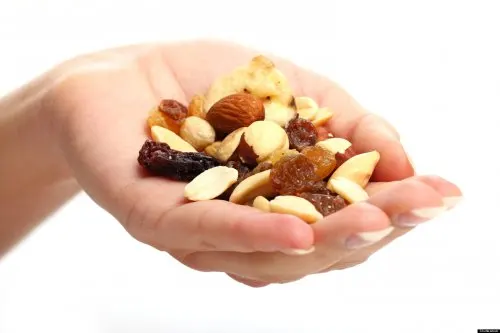Use Your Hands to Measure Food Portions


Reviewed and approved by the pedagogue in physical education and nutritionist Elisa Morales Lupayante
If there’s one thing we know is that food portions matter. One aspect that you should take into account when following a good diet is the amount of food that you eat throughout the day.
While most people are already used to splitting up their food into portions, there are still those who have difficulty doing this.
And although nutritionists have recommended eating small amounts a greater number of times a day, many continue to make bad choices in their diet.
Fortunately, it’s no longer necessary to invest money in scales or rigorous methods to calculate how daily food portions should be.
The only thing that you will need from now on to not mismeasure food portions be will be your hands.
That’s right! Although many of us don’t know it yet, our hands allow us to perfectly calculate how much to eat.
See also: 5 Protein Shakes that You Should Include in Your Diet
How to use your hands to measure food portions
It’s likely that you know that your hands can tell you certain information about yourself. For example, they may reveal aspects of your personality or some signs of health.
However, measuring the amount of food in each food group with your hands is a lesser known aspect.
Since we know you’re interested in how this might be possible, we’ll give you more information about this below.
The “hand diet”

This diet became popular because it respects nutritional balance and isn’t a popular “miracle” diet.
It is argued that being overweight is due to the excess portions necessary for each body, which can be measured according to the size of the hand.
The diet then states that meat portions shouldn’t be larger than the palm of the hand and that carbohydrates should not exceed the diameter of the closed fist.
The method has caught the attention of nutritionists and experts in the subject, who consider it an interesting way to help understand that nutrition is an individual matter.
The size of a closed fist
The size of a closed fist should be used to measure portions when food that is high in carbohydrates.
Some examples:
- Pasta.
- Rice.
- Potatoes.
- Bread.
The size of a hand

Likewise, the space occupied by the palm of the hand starting from the wrist and ending at the beginning of the fingers can be used to measure for foods rich in proteins such as lentils.
Read also: Try This Effective Diet to Reduce Bad Cholesterol
Two hands together
The size of two hands together in the shape of a bowl is suitable for measuring the portion of vegetables you should eat during the day.
The size of the index and middle fingers together
You can choose the correct portion of cheese by measuring the size of the index and middle fingers together.
Size of the first phalange of the thumb

This amount is recommended for both fats and sugars.
It’s important to remember that this is a food group that should be taken in moderation throughout the day.
Other recommendations to avoid overeating
Although using our hands is useful for food portions, we know that it’s important to address other recommendations.
Therefore, in addition to the above, it’s good to:
- Avoid consumption of packaged and processed foods.
- Read the recommended portions on the labels of the food products and take them into account when eating the said product.
- Moderate your consumption of sweet things, since they tend to be addictive.
- Choose small plates to eat your meals on and divide rations for four or five meals a day.
- Avoid eating with distractions such as the television, your computer or mobile, among other things.
- Put aside about 20 minutes for each meal, and eat it in a quiet place, away from noises.
- Add more vegetables in each main meal, so that half of the dish is composed of these.
- Moderately exercise.
- Increase your consumption of water and low-calorie beverages.
As you’ve just noticed, there are many things you can take into account to control the size of your food portions during the day.
Although it may not be easy to put them into practice at first, as the days go by your body will become accustomed to these changes.
Are you going to try them?
All cited sources were thoroughly reviewed by our team to ensure their quality, reliability, currency, and validity. The bibliography of this article was considered reliable and of academic or scientific accuracy.
- Fiolet T, Srour B, Sellem L, Kesse-Guyot E, Allès B, Méjean C, et al. Consumption of ultra-processed foods and cancer risk: Results from NutriNet-Santé prospective cohort. BMJ. 2018;
- Benton D. Portion Size: What We Know and What We Need to Know. Crit Rev Food Sci Nutr. 2015;
- Gibson AA, Hsu MSH, Rangan AM, Seimon R V., Lee CMY, Das A, et al. Accuracy of hands v. household measures as portion size estimation AIDS. J Nutr Sci. 2016;
- Young LR, Nestle M. Portion Sizes in Dietary Assessment: Issues and Policy Implications. Nutrition Reviews. 1995.
This text is provided for informational purposes only and does not replace consultation with a professional. If in doubt, consult your specialist.








